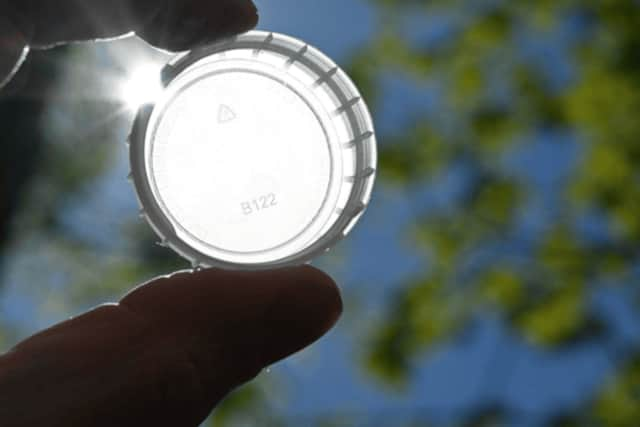Why are milk bottle tops white? Caps and lids colour changes explained - how to recognise supermarket milk
and live on Freeview channel 276
As we all continue to become more and more environmentally conscious, small but significant changes continue to be introduced to areas of our lives we might not have considered at first thought.
One slight alteration that is catching shoppers off guard, is the introduction of clear or white milk bottle tops and lids, which are replacing their colour coded variants used to help you find the right type of milk.
Advertisement
Hide AdAdvertisement
Hide AdSo why exactly is this change being made, and how will we be able to find the right type of milk now? Here is everything you need to know.
Why are coloured milk bottle tops being removed?
Clear - or non-coloured - milk bottle tops are actually nothing new. A number of the bigger UK supermarkets ran successful trial schemes throughout 2022, with many opting to make the easily recyclable change for good.
Waitrose replaced red, blue and green milk bottle tops in favour of clear ones that are easy to recycle, after a successful pilot scheme with shoppers who were unfazed by the loss of coloured plastic caps on whole, semi-skimmed and skimmed milk.
It wasn’t announced exactly when the clear tops - which make the plastic bottles 100% recyclable and will appear across the ‘Essential milk’ range, accounting for 44% of milk sales - would begin to appear on shop shelves, but the grocer did clarify that the transition would take place across all 331 of its stores “next year” - meaning 2023.
Advertisement
Hide AdAdvertisement
Hide Ad

Likewise, Lidl also announced it would be permanently removing the green-coloured milk caps on semi-skimmed and organic fresh milk in a bid to become more environmentally friendly.
Simply put, coloured caps cannot be easily recycled back into food-grade packaging, whereas caps made from clear plastic can. The clear caps - made from High-Density Polythene - may not necessarily be reused again as bottle tops, but then can be recycled to create new milk bottles, keeping the material within a circular system.
How can I tell the difference between different milks now?
Colour-coded bottle tops have served as an easy way to tell the difference between regular, semi-skimmed or skimmed milk for decades, and are a more modern plastic version of the foil tops seen on the more traditional glass bottles left outside by milkmen and women.
So how will we cope now that they’re on the way out? The answer is reassuringly simple...
Advertisement
Hide AdAdvertisement
Hide AdMost supermarkets doing away with the coloured tops will simply be replacing them with more colourful labels, which will help shoppers easily distinguish the different varieties at a glance.
If anything, these labels are much larger than their corresponding tops, so it should be even easier to tell which milk is which from halfway across the dairy aisle. In fact, Waitrose’s trial scheme found that half of shoppers already check the label anyway.
When are clear caps coming to my supermarket?
You may find that your supermarket is still making use of coloured milk bottle caps. Clear tops will likely be phased in over the coming weeks and months, as the clear alternative starts to become the packaging norm.
It may be that individual supermarkets who haven;t yet made the change - perhaps as they’re still working through older stock - won’t even announce that the change is being made, so it’s hard to say exactly when you might see clear tops on bottles.
But as consumers become ever more aware of where packaging comes from and ends up, changes like this will continue to be welcomed.
Comment Guidelines
National World encourages reader discussion on our stories. User feedback, insights and back-and-forth exchanges add a rich layer of context to reporting. Please review our Community Guidelines before commenting.
